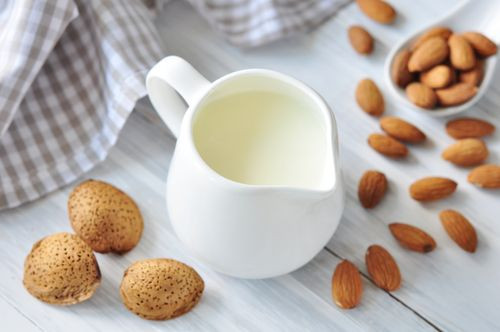Almond Milk's Water Demands Hurt The Environment, Hurting Everyone: The Alternative Milks You Can Use Instead

Allow us to preface this by saying we at Medical Daily love using almond milk to up our smoothie game. So we're equally saddened to hear (and have to report) the dairy alternative may be more trouble than it's worth.
Some background: Almond milk makes up two-thirds of the available plant-based "milk" options and has steadily been on the rise. For example, a report published in Dairy Alternative Beverages in the US found Silk Pure Almond increased 500 percent in sales in 2010, with an additional 69 percent in 2011.
The thing is that an increase in demand means an increase in almond production. California is the only state that produces the tree nut commercially, The Atlantic reported, and each one requires 1.1 gallons of water. They're also in the middle of the worst drought in the state's history, and California's Department of Agriculture projected this year's almond farmers will have their largest harvest to date.
Is spending the four or five bucks on alternative dairy at least benefitting your health? Tom Philpott, a reporter for Mother Jones, compared 1 ounce of almonds (28 grams) to an 8-ounce bottle of Calfia Farms almond milk, and the bottle contains considerably less protein, fiber, and monounsaturated and polyunsaturated fats (the good kind). Philpott also found any increase in minerals, like calcium, are a result of additives. To which he asked: "All fine and well, but if you're interested in added nutritents, why not just pop a vitamin pill?"
Time To Mooove Back To The Dairy Aisle?
The likelihood that almond milk isn't the super healthy option we think it is, is not reason enough to switch back to cow milk. Well, at least for those of us not drinking it to soothe dairy insensitivies and allergies.
PETA reported there are nine million cows on United States dairy farms compared to the $116 billion demand, which means cows are often manipulated with harmful antibiotics and hormones to produce even more milk. This leads to mastitis, a painful inflammation of a cow's mammary glands and a top reason they're sent to be slaughtered. Mastitis, PETA added, results from disease-causing bacteria, like E. coli. All of which have the potential to end up in our morning bowl of cereal.
On the contrary, organic milk doesn't have as bad a reputation. A first-of-its-kind study from Washington State University found that, actually, organic milk has a better ratio of omega-3 and 6 fatty acids. Consuming more of this kind of fat is proven to reduce risk for cardiovascular disease.
The Utter Truth About Almonds
Philpott was right when he found a raw serving of almonds is better for health than an equal (or greater) amount of almond milk.
A recent study published in the British Journal of Nutrition found eating an ounce of the tree nuts daily could decrease heart disease risk by 3.5 percent over the course of 10 years. Prior research found that the same serving also contains as much polyphenols — antioxidants associated with lowering risk for heart disease and cancer — as a cup of broccoli. It's also among the low-calorie nuts.
This brings us to one of three options. The first is to stick with organic dairy milk and get your raw almond fix during snack time, or really any time you're hungry. The second is to make your own almond milk. Shape has a recipe that preserves a lot of the nut's OG nutrition and skips the (questionable) added vitamins and minerals brands tend to add. The second is to mooo-ve on to another type of alternative dairy. (OK, we'll stop with the milk puns now.)
Or thirdly, experiment with other non-dairy alternatives. Philpott is a fan of kefir (pronounced KEE-FER) milk. It's often advertised as liquid yogurt since it packs a similar amount of the live bacteria that promotes good gut health. There's also coconut milk, flax milk, hemp milk, rice milk, and soymilk. All non-dairy. All a friendlier approach to your health and the environment.



























